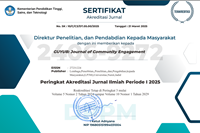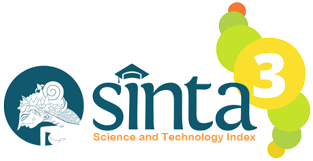PKM Creative Economy Assistance through Reusing Non-Organic Waste into Household Appliances
Authors (s)
(1) * Temmy Wijaya
 (Universitas Nurul Jadid)
(Universitas Nurul Jadid) Indonesia
(2) Siti Astutik (Universitas Nurul Jadid)
Indonesia
(3) A’isah A’isah (Universitas Nurul Jadid)
Indonesia
(4) Lailatul Yakini (Universitas Nurul Jadid)
Indonesia
(5) Lisarotil Jamilah (Universitas Nurul Jadid)
Indonesia
(6) Nur Ayu Febriana (Universitas Nurul Jadid)
Indonesia
(*) Corresponding Author
AbstractThe problem of garbage was the classical problem that is always faced by residents, especially in the Probolinggo City. Because of the quantity and danger, plastic waste composed of chemicals was difficult to decompose. Hence, it was dangerous for the environment. Therefore, it was necessary to process waste to convert plastic into crafts with aesthetic and selling value. This community service used participation action research (PAR) through analysis surveys and counselling and training. The processing of waste from plastic packaging into handicrafts was being carried out to increase the creativity and skills of the community, especially housewives, unemployed youth and children who drop out of school. Besides that, it can also minimize environmental pollution so that Probolinggo city residents can care more about environmental cleanliness. Through training and assistance in making creations for the use of waste originating from plastic packaging, residents will have more knowledge about business opportunities that can be created through creativity and skills so that the economic level of residents becomes higher. |
Keywords
Full Text: PDF
Refbacks
- There are currently no refbacks.
Copyright (c) 2021 Temmy Wijaya, Siti Astutik, A’isah A’isah, Lailatul Yakini, Lisarotil Jamilah, Nur Ayu Febriana

This work is licensed under a Creative Commons Attribution-ShareAlike 4.0 International License.
This journal is licensed under

Creative Commons Attribution-ShareAlike 4.0 International License.








.png)
